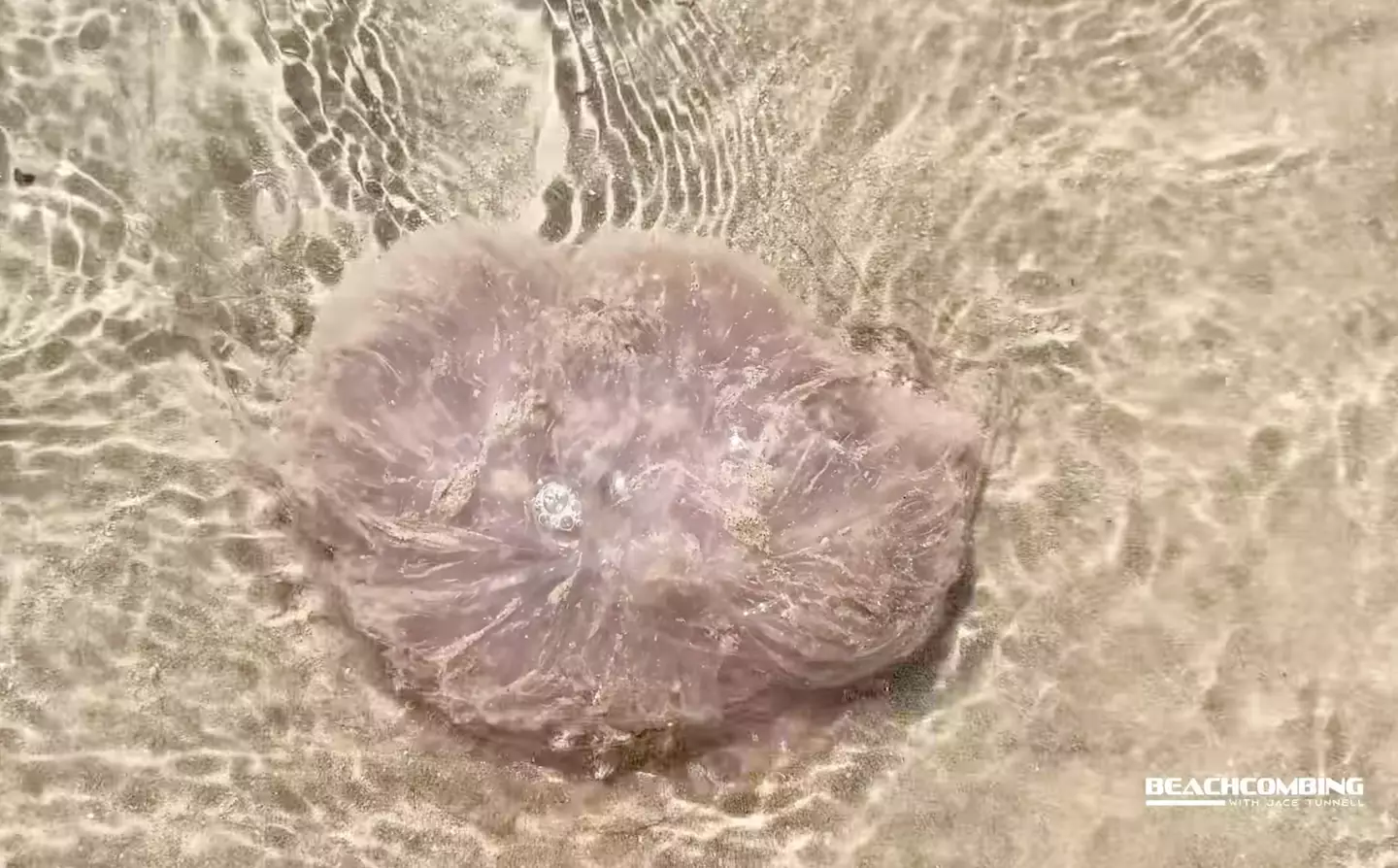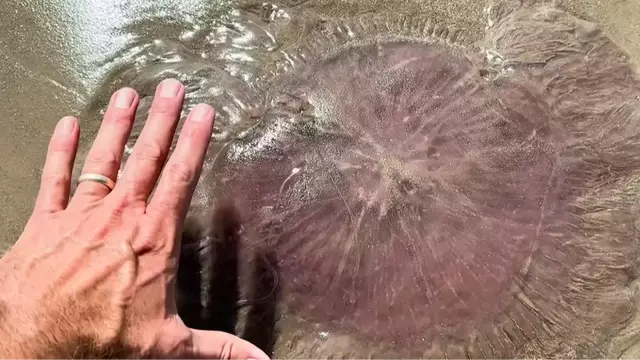A mesmerizing yet eerie marine visitor has been washing ashore along a 10-mile stretch of Texas coastline—large jellyfish known as the “pink meanie.” With candyfloss-pink hues and sprawling tentacles that can extend over 70 feet long, these jellyfish captivate beachgoers while revealing fascinating ecological dynamics.
Jace Tunnell, director of community engagement at the Harte Research Institute in Corpus Christi, reported sightings of more than ten such creatures, weighing over 50 pounds and stretching tentacles longer than a bus. These giant jellyfish have been spotted enveloping their prey, particularly the common moon jellyfish.

The pink meanie, scientifically named Drymonema larsoni, thrives when moon jellies (Aurelia aurita) are abundant. This predator’s population surges in times when moon jellyfish bloom, as they prey on these smaller jellyfish almost exclusively.
Despite their seemingly delicate appearance, pink meanies are ruthless hunters, using their long oral arms to digest captured prey. Their sting ranks low on toxicity, rated a mild 2 out of 10, yet caution is advised, especially for those sensitive to jellyfish venom.

Researchers first identified Drymonema larsoni as a unique species in 2011, distinct enough to warrant a new family classification—the first new jellyfish family created since 1921. Sightings remain rare, adding allure and mystery, highlighting how much of the ocean’s biodiversity remains unknown.


